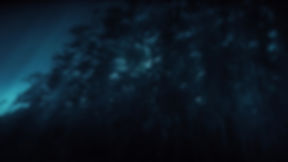
Blood Work
720p and 1080p Videos, various length loops, 2003-2006
Hairline, installation shot and excerpts, 720p video, stereo sound, 2005.
Resisting Invisibility
exceprt from Fotofest catalog, 2006
Lisa D. Freiman, Ph.D.
Commissioner, U.S. Pavilion, 54th International Biennale di Venezia
In Illness as Metaphor, Susan Sontag writes about typical societal responses to illness, particularly cancer, in terms of dread, mystery, taboo, and concealment. She outlines the anti-intellectual responses to this devastating disease, suggesting that they are indicative of the increasing resistance by advanced industrial societies to come to terms with death and serious illness. Arthur Liou’s high definition video series, Bloodwork, repudiates these destructive responses to long-term illness by forcing himself and, by extension, the public to witness in microscopic detail an aesthetic expression of the disease. Simultaneously horrifying and uncannily beautiful, Liou’s work constitutes an ongoing constructive response to his young daughter Vivian’s struggle with leukemia. Liou’s series, which consists of three video installations – CBC, Blasts, and Hairline – not only boldly confronts the leukemia diagnosis by using it as the work’s central subject, but also takes the disease’s scientific structure as the basis for its formal language. The abstract imagery found in this series originates from Vivian’s body, magnified hundreds to thousands of times. According to Liou, “The composition is based on the similarity between the cancer cells and the normal blood cells. . . . As a metaphor for the medical process, the work refers to the terrifying effects of both the disease and its treatment.”
Head of the digital media program at Indiana University’s School of Fine Arts, Bloodwork is undoubtedly Arthur Liou’s most powerful and provocative work to date both in terms of its content and its technological prowess. In CBC (complete blood counts), Liou poignantly interweaves sound and imagery to suggest how chemotherapy attacks both normal and cancerous cells, creating cycles of anemia that require patients to undergo blood transfusions to restore normal bodily function. While the music and sounds of running liquid intensify, the viewer witnesses hundreds of tiny naked babies attempting to crawl through an abstract, uneven field of organic red blood cells. The babies’ energetic, Sisyphean movements begin to slow down along with the music as the bodies eventually disappear into a field of gray that overtakes the screen. Soon after, the anemic cells are replenished by an infusion of new red blood cells and small bodies. The video’s aesthetic structure reiterates the repeated cycles of attack, cell death, and regeneration experienced during cancer treatments.
Like CBC, Blasts takes its title from cancer terminology. Lymphoblasts, or immature white blood cells, accumulate in bone marrow, crowding out normal blood cells until they can no longer be produced. This highly abstracted video represents variously magnified representations of Liou’s daughter’s feet moving around the screen while we hear the pleading voice of a young child whispering “I’m going to get better,” “Please get better,” “I want to get better, please help me, please get better,” “I want it to go away.” The heartbreaking refrain is coupled by a foreboding, haunting soundtrack that builds and multiplies along with the density of images, reinforcing the tragic action of lymphoblasts.
Hairline addresses the inevitability of hair loss, one of the most common, visible side effects of chemotherapy. It focuses on a year-long period during which Vivian lost all of her hair and then she and her family watched it slowly replenish itself along with her health. The video presents a bird’s eye view looking down into a celestial, blood like pool, where babies appear to be leaping upwards, multiplying, and gradually moving off screen and fading away into white light.